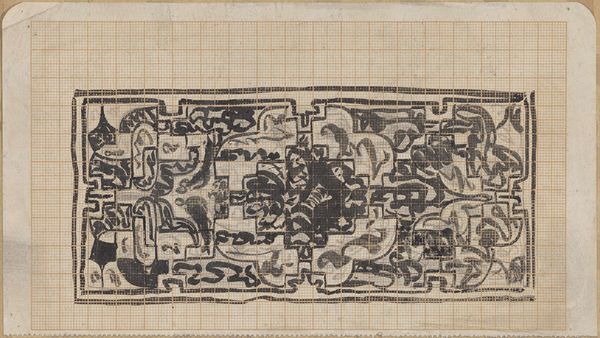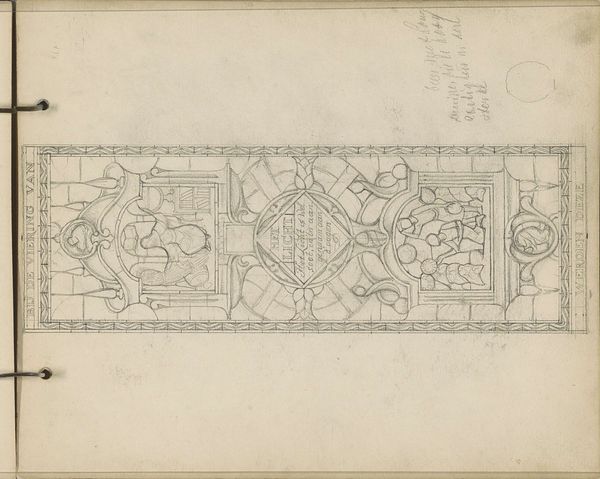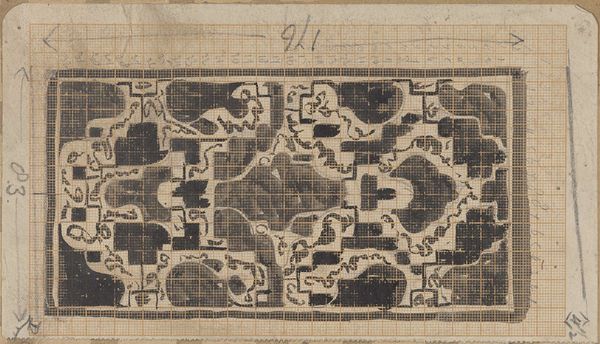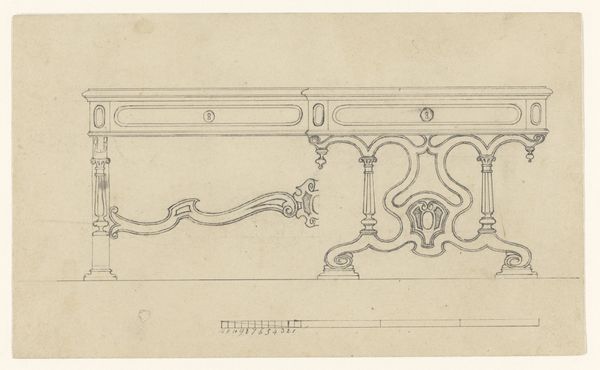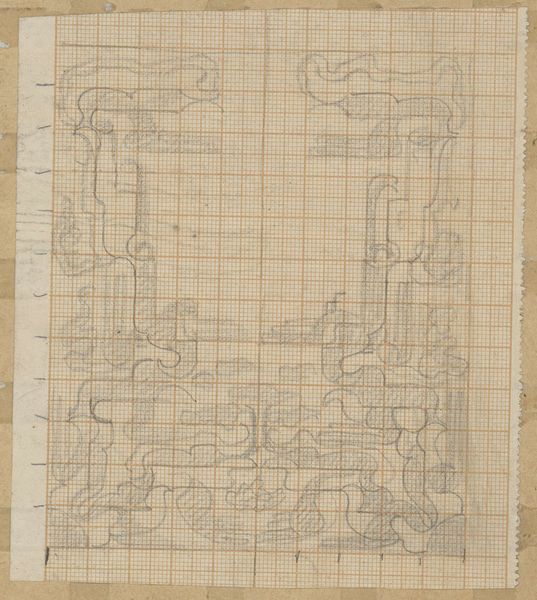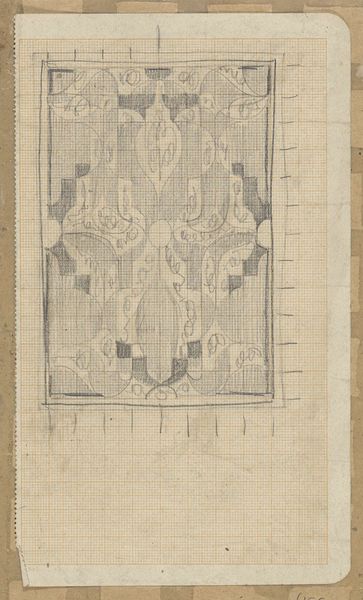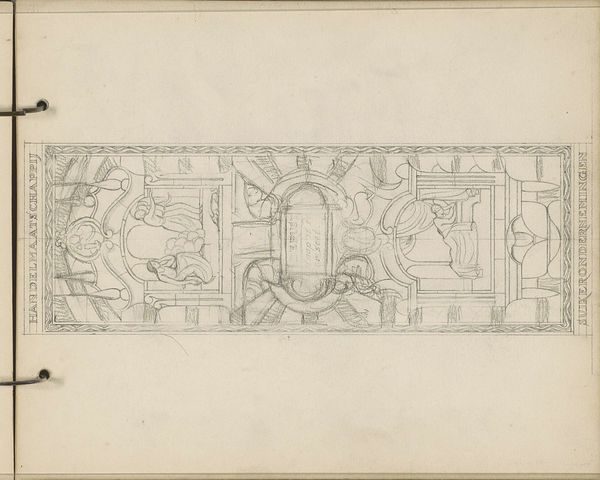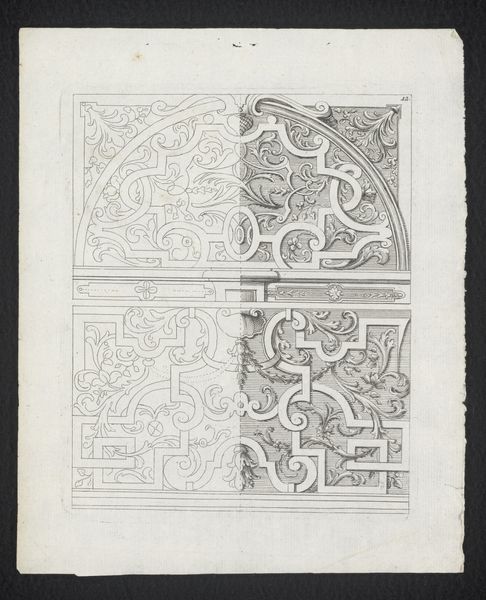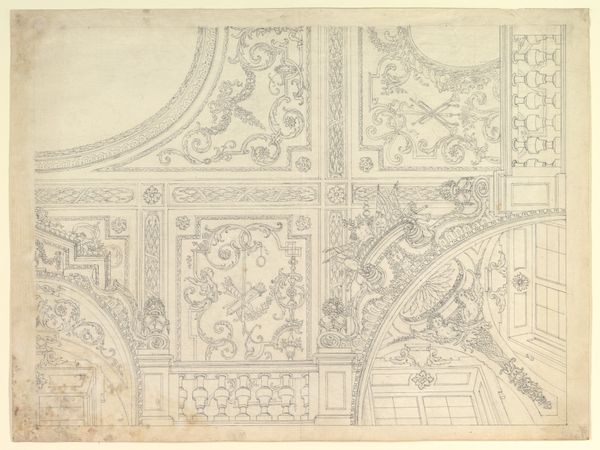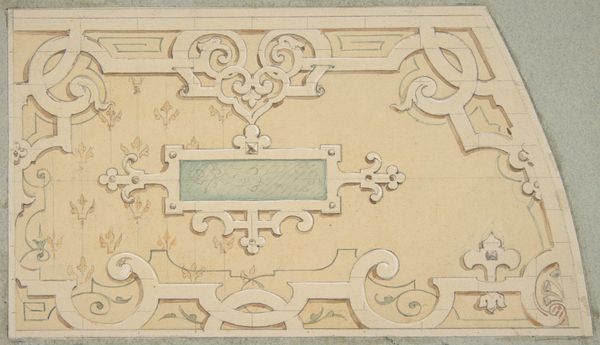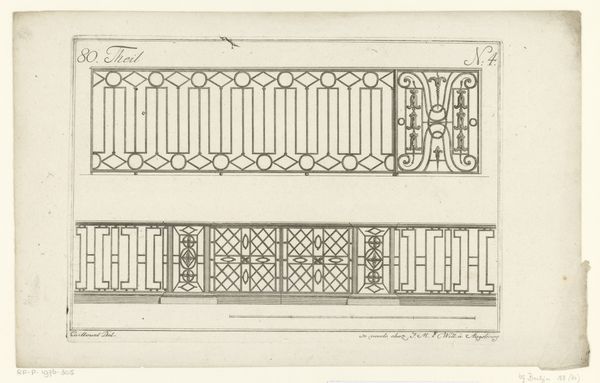
drawing, paper, ink
#
drawing
#
aged paper
#
toned paper
#
pen sketch
#
old engraving style
#
paper
#
personal sketchbook
#
ink
#
pen-ink sketch
#
ink colored
#
line
#
pen work
#
sketchbook drawing
#
decorative-art
#
sketchbook art
Dimensions: height 212 mm, width 120 mm
Copyright: Rijks Museum: Open Domain
Curator: Oh, this is interesting. Looking at Carel Adolph Lion Cachet's "Ontwerp voor een kleed," or "Design for a rug," feels a bit like peering into someone’s private world of artistry. It was produced sometime between 1874 and 1945. What are your immediate impressions? Editor: Well, first off, there's an undeniable charm in seeing the artist’s process laid bare, almost like stumbling upon a page torn from a personal sketchbook. It has a lovely symmetry that makes you think about art nouveau patterns. Yet it has this kind of unfinished quality that takes away from this symmetry and gives a great feel of organic movement. Curator: Absolutely, you can practically feel the artist’s hand moving across the paper, experimenting. Made using ink on paper, it's part of the Rijksmuseum's collection. What's striking is the juxtaposition of careful planning indicated by the grid with the fluidity of the pen work. Editor: Exactly. It also seems like it's more than just the process of creating something functional. This decorative pattern almost feels charged with this deeper cultural yearning, that connects it to this revivalist spirit so rife in European design at the time. But also to that old engraving style in which forms would flow easily and beautifully as they age. Curator: Indeed, the socio-political context of art movements such as Pattern and Decoration reveal the search for visual idioms that connected the artist to the past and perhaps even, with this rug in mind, to domestic intimacy. Cachet has essentially gifted us an intimate snapshot of this era through an unfulfilled commission. Editor: So what is revealed is also art's broader social impact. We can think of its influence and imagine how mass-produced variations in printed patterns made luxury design so affordable, affecting domestic experiences so subtly that we don't see art in our daily life! Curator: Right? When one looks at pieces such as Cachet's design here, a beautiful synthesis emerges. You appreciate how design history, on its own, carries these untold stories—stories told through colors and threads. Editor: Yes, in our short reflection we've glimpsed not only a single artist's creative explorations, but we've also connected his aspirations with patterns, aesthetics, economics and everyday life. Now, doesn’t that make one think of other designs and stories we've overlooked in our daily lives?
Comments
No comments
Be the first to comment and join the conversation on the ultimate creative platform.
